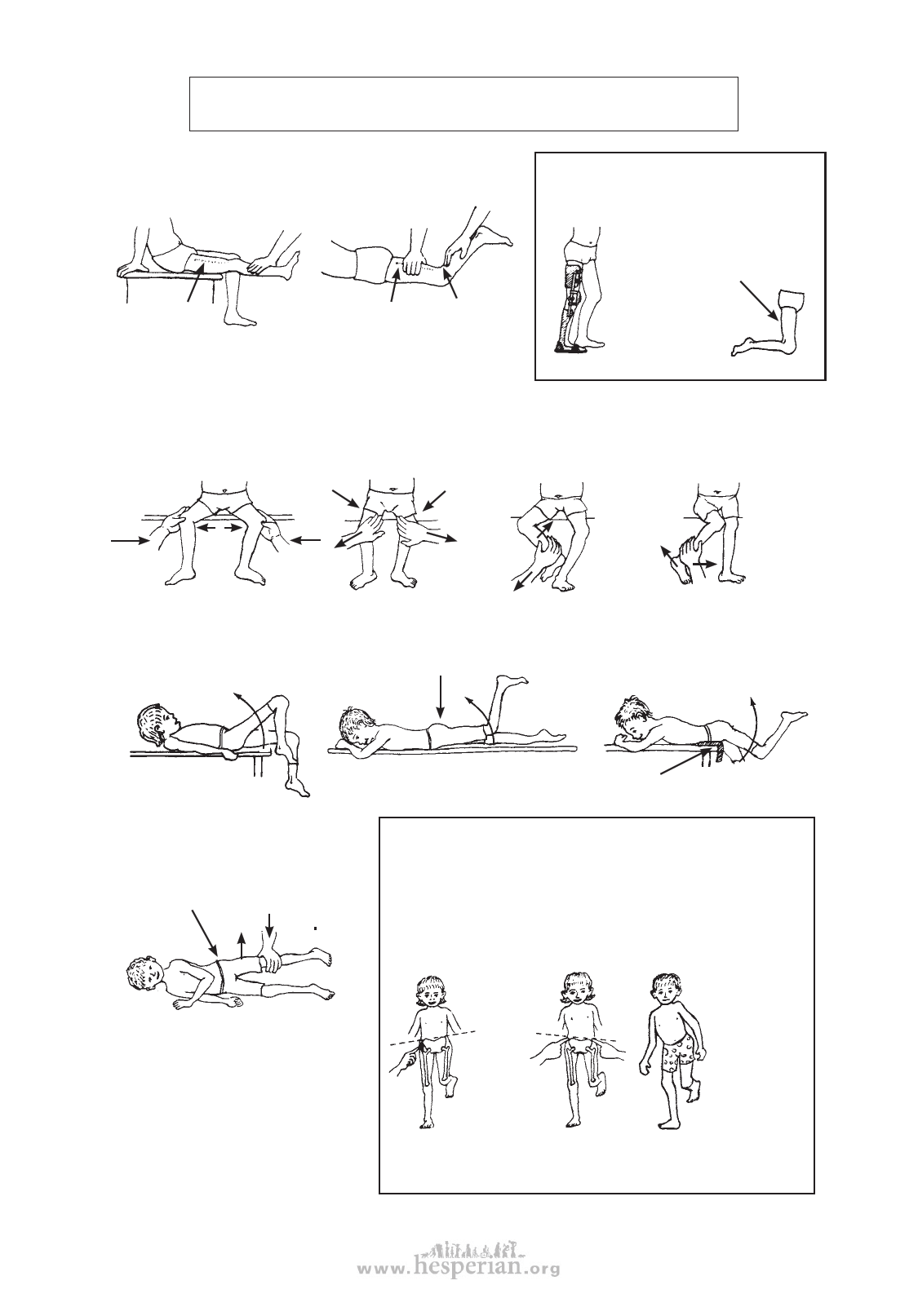
EXAMINATION 31
To learn about which muscles move body parts in different ways,
as you test muscle strength, feel which muscles and cords tighten.
Knee
STRAIGHTEN
You can feel
the muscle
tighten on top
of the thigh.
Hips
OPENING
BEND
Feel the muscles
tighten on the
back of the
thigh.
Feel the
tight cords
pull here.
E X AMPLES OF RE ASONS FOR TESTING
1. POOR or NO strength for
straightening knee may
mean an above-knee brace
is needed.
2. Stronger muscles
in back of the
thigh than in
front can lead
to a bent-knee
contracture.
CLOSING
ROTATING HIP OUT
(and leg in)
ROTATING HIP IN
(and leg out)
BENDING
STRAIGHTENING
Feel the butt
muscles tighten.
If the hip has contractures, test
with legs off end of table.
SIDEWAYS LEFT
Feel the side-of-hip muscles tighten
here.
Note: Weak hip muscles sometimes
lead to dislocation of the hip. Be sure
to check for this, too. (See p. 155.)
Testing side-of-hip muscles is
important for evaluating why a child
limps or whether a hip-band may be
needed on a long-leg brace.
padding
TEST FOR WEAK SIDE-OF-HIP MUSCLES IN
THE CHILD WHO CAN STAND
Have the child stand on the weaker leg.
NORMAL
The child stands
straight. The hip
tilts up on the
lifted leg.
NOT NORMAL
The hip tilts
down on
the lifted
side.
Or the child shifts
his whole weight so
it balances over the
weak hip.
weak
side-of-hip
muscles
This child dips
to the side on
each step of the
weak leg.
(This is often
seen with
polio.)
Note: Dipping to one side when walking is caused more by weak
side-of-hip muscles than by a shorter leg. But a shorter leg can
make dipping worse.
disabled village children